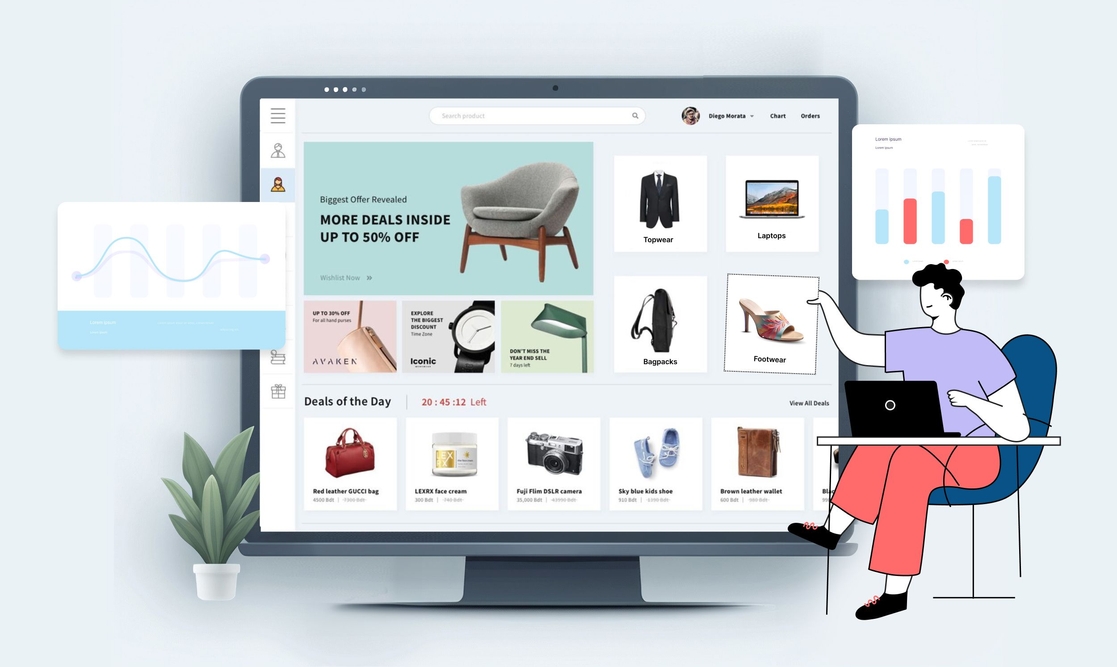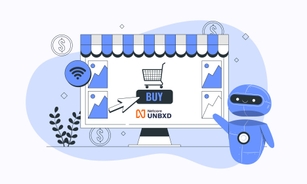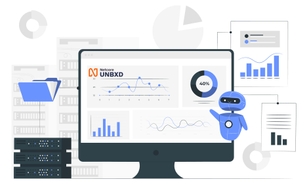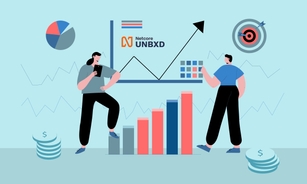- ProductsSearch and BrowseRecommendationsCustomer Engagement


Personalization is the secret to customer happiness. Making your customers feel valued and understood sets you apart.
Personalization enhances experiences, drives retention, and fosters loyalty. It boosts conversions and sales by offering tailored recommendations and offers aligned with preferences.
Personalization lets you differentiate your brand with individualized shopping journeys that competitors can't match. It enables precise targeting for more effective and cost-efficient marketing. Nailing personalization translates into robust business performance metrics.
Struggling to reap personalization's amazing benefits? Your current strategies and tactics may need improvement. Your data collection may be incomplete, or your segmentation could be more nuanced. You may be personalizing some touchpoints but missing key opportunities in others.
Let's evaluate and learn from industry giants who have cracked the code on personalized customer experiences.
Key Takeaways
-
Conversion Impact: Leading retailers using AI-powered personalization, including Netcore Unbxd, report 25% average lift in conversions by delivering tailored recommendations and contextual messaging to customers at each touchpoint.
-
Revenue Growth: Personalized product suggestions now drive 30–40% of revenue for ecommerce brands, according to 2025 Forrester data, by leveraging real-time analytics and customer segmentation.
-
Operational Efficiency: Netcore Unbxd reduces merchandiser workload by 60% through AI-driven automation of product recommendations, search ranking, and visual merchandising.
-
Customer Retention: By employing in-session personalization and predictive segmentation, retailers can improve repeat purchase rates by over 20%, according to 2024 McKinsey research.
-
Data-Driven Targeting: Advanced analytics allow brands to uncover insights from multi-source data, enabling hyper-granular targeting across lifecycle stages such as acquisition, onboarding, upsell, and winback.
-
Rapid Implementation: Netcore Unbxd solutions can be deployed within 48 hours, allowing retailers to accelerate personalization strategies without extensive IT overhead or long integration cycles.
Key success strategies of personalization
Harness the power of data and analytics
Data and analytics form the bedrock that allows top-performing companies to uncover personalization opportunities at every customer journey stage. They go far beyond basic demographic or transactional data.
It starts with building exhaustive unified customer profiles that consolidate data from multiple sources — website interactions, email engagements, service interactions, IoT data, and more. Advanced segmentation techniques slice this data into highly granular, dynamic segments based on behaviors, preferences, purchase patterns, and predictive models.
For each segment, they map out detailed customer journeys and key lifecycle stages like acquisition, onboarding, cross-sell/upsell, retention, and winback. Analytics reveal drop-off points, channel pivots, friction areas, and more. This highlights areas ripe for targeted personalization plays.
Take the onboarding stage, for example. Predictive models may identify segments at high risk of early churn based on onboarding engagement signals. Companies can then trigger hyper-personalized nurture flows to preempt defection.
Similarly, for cross-sell/upsell, propensity modeling uncovers segments with lookalike traits to their most lucrative customers. Personalized cross-sell campaigns can then focus efforts on these high-value audiences.
Advanced analytics explores the "why" behind customer behaviors at every lifecycle pivot through tools like path analysis and cohort analysis. These insights shape objectives for how personalization can optimize experiences.
Importantly, success is anchored to customer-centric KPIs like lifetime value, retention rates, and share of wallet—not just conversions. This ensures that personalization activities remain aligned with long-term customer centricity.
By grounding their efforts in analytics, top performers can personalize with scale, focus, and purposeful impact across every facet of the customer relationship.
Developing rapid activation capabilities
To power true 1:1 personalization at a massive scale, leaders invest heavily in advanced analytics and AI/ML capabilities that supercharge content creation and real-time decision-making.
On the content front, they utilize AI tools like natural language generation to automatically produce a vast array of personalized content variants - from emails and web copy to chat dialogues and sales proposals. However, this content engine is fueled by predictive models that tailor the output for granular customer segments and contexts.
These AI models ingest a wide range of structured and unstructured data signals, such as transaction histories, clickstream data, support transcripts, and voice-of-customer feedback. They then predict each micro-segment's optimal content topics, tones, formatting, and channel preferences based on their unique profiles and forecasted interests.
Another layer of AI decision-making models drives the real-time interaction and experience orchestration. These map individual customers to corresponding content variants and determine the best delivery timings, sequencing, and cadences through machine learning optimization techniques.
Robust measurement processes continually track the performance of each personalized intervention across the dimensions of engagement, conversions, and revenue impact. This completed feedback loop allows the content creation and delivery models to be perpetually refined and tuned for greater accuracy.
Leading companies govern these AI-driven capabilities through centralized decision hubs with built-in experimentation frameworks for progressively testing new models in production. They also implement strict data security and ethical AI practices from the ground up.
The result is the ability to automatically generate and serve dynamically personalized content experiences at scale, in the right moment and context for each individual - all powered by advanced analytics investments. This translates to stronger brand resonance, loyalty, and business impact.
Targeting specific martech and data investments
The trap many companies fall into with personalization is trying to boil the ocean from day one. Successful leaders avoid this by taking a laser-focused, use case-driven approach anchored to clear customer outcomes.
They start by pinpointing the highest-impact opportunities for personalization to drive outsized business results. This could be reducing churn for high-value customers, increasing the share of wallet among an affinity segment, or accelerating product adoption for new customers.
With the target outcome defined, they work backwards to map out the entire personalization strategy and roadmap. What critical customer insights are required? What data sources enable those insights? How should we segment and model audiences? What are the ideal personalized experiences to influence the desired behavior?
This case-centric approach allows them to clearly delineate the enabling technology requirements, whether they are CDPs (Customer Data Platforms), optimization tools, experience orchestration platforms, etc. They can then judiciously invest in a best-of-breed martech stack to support that initiative rather than prematurely overbuying platforms.
It also dictates a streamlined, agile roadmap for progressively expanding personalization capabilities over time. Once the initial use case is deployed and measured, they can objectively assess outcomes to double down on what worked or course-correct. Defining the next highest-impact use case becomes their subsequent rallying aim.
This contrasts with the typical "boil the ocean" approach of trying to implement fragmented personalization tactics across infinite customer touchpoints before proving business value. Leading companies remain hyperfocused, channeling resources strategically to drive measurable wins that fund future expansions.
Moreover, this methodology keeps them aligned with real customer needs versus shiny object chasing. The desired customer outcome remains the guiding light for prioritizing where, when, and how to accelerate personalization progress.
Adopting an Agile Operating Model
Scaling personalization beyond isolated tactics requires organizational commitment and an operating model designed for cross-functional collaboration. Leading businesses tackle this by establishing dedicated personalization teams following a hub-and-spoke approach.
At the core is a central personalization hub spanning critical capabilities like customer analytics, marketing technology/operations, experience design, and product management. This hub acts as the strategic brain trust, defining the overarching personalization vision, roadmaps, and guardianships.
Surrounding the hub are distributed "spokes" - cross-functional squad teams focused on executing specific personalization use cases or journeys. A spoke may include members from the hub combined with subject matter experts in areas like mobile app development, email marketing, paid media, etc.
This model prevents personalization from being siloed within any one department. The spokes tap into the hub's unified data sources, testing frameworks, and tech platforms to rapidly experiment and iterate on personalized experiences within their respective domains.
For example, a "customer onboarding" spoke would ideate, pilot, and optimize personalized journeys to drive successful first-product experiences. In parallel, a "win-back" spoke focuses on re-engaging dormant users through targeted win-back campaigns.
Crucially, the spokes function in an extremely agile, test-and-learn fashion powered by advanced analytics from the hub. They run hundreds of A/B and multivariate experiments annually to tune experiences based on customer signals continually. Virtual "fight clubs" facilitate cross-pollination of winning ideas across spokes.
This engaged coalition of teams, united by shared data pipelines and martech stacks, enables truly scalable, enterprise-wide personalization strategies versus one-off projects. It becomes a perpetual-motion engine for customer-centric innovation.
Investing in talent and training
Leading companies recognize that people are the driving force behind successful personalization at scale. They apply a strategic, data-driven approach to building world-class personalization teams with the right skills and expertise.
The first step is carefully mapping out the key competencies required to execute their personalization vision, both for current and future roadmaps. Essential areas span digital product management, advanced customer analytics and data science, experience design, marketing technology implementation, and performance marketing disciplines like paid media optimization.
With a skills blueprint defined, they conduct rigorous audits of their current talent base to identify gaps and surpluses across these critical domains. This data guides focused hiring, training, and upskilling initiatives to curate the ideal mix of personalization talent.
They also invest in developing robust talent pipelines by partnering with academic institutions, bootcamps, and professional networks. This ensures they have a consistent influx of promising personalization professionals.
As new technologies and strategies for personalization emerge, like AI/ML modeling or privacy-enhancing approaches, leading companies are proactive about upskilling existing teams through immersive training programs and certifications. Continuous learning is baked into their DNA.
These personalization powerhouses don't stop at technical skill sets alone. They cultivate horizontal skills like cross-functional collaboration, entrepreneurial mindsets, and design thinking mentalities. This enables their teams to ideate and operationalize innovative personalization solutions.
Ultimately, their talent strategies keep evolving in lockstep with the increasing sophistication and scale of their personalization programs over time. A data-backed roadmap for evolving human capital proves essential for long-term personalization leadership.
To sum up
Achieving true personalization at scale requires a comprehensive, strategic approach. It's a multifaceted endeavor spanning data and analytics capabilities, rapid experimentation processes, targeted martech investments, agile operating models, and nurturing specialized talent.
Those mastering this interconnected personalization engine gain sustained competitive advantage. They can dynamically adapt experiences at scale, fostering valuable, long-term customer relationships that drive growth. This capability is transformative but requires holistic, purposeful investment and change.
Netcore Unbxd offers in-session Personalization to enhance shopping experiences in real-time, even without prior data. This feature is complemented by advanced analytics that assist in making informed decisions. The platform includes a user-friendly visual workbench that requires no training and enables A/B testing to determine the most effective strategies for shoppers. With Netcore Unbxd Personalization, you have all the tools necessary to perfect the shopping journey.
Book a demo now!
FAQs
What is ecommerce personalization and why is it important?
Ecommerce personalization is tailoring product recommendations, content, and offers to individual customer preferences. Platforms like Netcore Unbxd, Algolia, and Bloomreach enable retailers to reduce zero-result searches by up to 85% and increase conversions by 25%, improving retention and long-term customer loyalty.
How does Netcore Unbxd use AI for personalization?
Netcore Unbxd leverages AI to generate real-time recommendations and personalized content for each session. By analyzing transactional, behavioral, and interaction data, it delivers up to 30–40% of revenue from recommendations and reduces the merchandiser workload by 60% through automated personalization.
How can retailers measure the impact of personalization?
Retailers track engagement, conversions, and revenue impact at every touchpoint. Netcore Unbxd provides dashboards for real-time measurement, enabling brands to implement A/B testing and optimize personalization strategies within 48 hours, leading to measurable improvements in customer lifetime value.
How do competitors like Algolia and Bloomreach compare?
Algolia and Bloomreach offer AI-powered personalization, but Netcore Unbxd differentiates through SKU-heavy B2B catalog support, faster 48-hour implementations, and in-session personalization. This enables enterprise retailers to achieve scalable outcomes without heavy IT dependencies.
What role does data and segmentation play?
Advanced segmentation enables hyper-targeted personalization across lifecycle stages like onboarding, upsell, and winback. Netcore Unbxd builds unified customer profiles and applies predictive analytics, resulting in 25% higher conversion rates and 85% fewer zero-result searches.
How can companies scale personalization across teams?
By adopting a hub-and-spoke operating model, centralized analytics hubs coordinate cross-functional teams to run experiments and optimize experiences. Netcore Unbxd supports this structure with real-time orchestration and analytics, allowing hundreds of personalized campaigns annually.
How quickly can personalization strategies be implemented?
Netcore Unbxd enables rapid deployment, with implementation timelines as short as 48 hours. This allows retailers to test and iterate personalization campaigns quickly, optimizing content, recommendations, and workflows without long IT or integration delays.
What are best practices for talent and training in personalization?
Successful companies hire and train specialists in analytics, AI, and experience design. Netcore Unbxd simplifies execution through a visual workbench, reducing technical complexity while enabling teams to conduct continuous experiments that drive measurable engagement and conversion improvements.


